This year has been a good time for reading books, but not a good time as far as writing reviews goes and I am way behind. So before I forget about them here are some notes about four of the backlog:
On the Beach by Nevil Shute 5*
I read this because I loved A Town Like Alice. It’s described on Goodreads as follows:

After the war is over, a radioactive cloud begins to sweep southwards on the winds, gradually poisoning everything in its path. An American submarine captain is among the survivors left sheltering in Australia, preparing with the locals for the inevitable. Despite his memories of his wife, he becomes close to a young woman struggling to accept the harsh realities of their situation. Then a faint Morse code signal is picked up, transmitting from the United States and the submarine must set sail through the bleak ocean to search for signs of life. On the Beach is Nevil Shute’s most powerful novel. Both gripping and intensely moving, its impact is unforgettable.
I think this is a terrifying and incredibly sad book, and yet it all seems low key. People go about their everyday lives but set against the background that the world is about to end. It was first published in 1957 and is set sometime in the early 1960s about a group of people living in Melbourne and on the USS submarine, Scorpion, as they await the arrival of deadly radiation spreading towards them from the Northern Hemisphere, following a nuclear war the previous year. It is slow moving, focusing on the individual characters and on the differing ways they deny or accept what is happening. How will they live the remaining few months ahead of them and how will they face the end of their lives? It’s a powerful book, well written and full of fascinating characters.
Lessons in Chemistry by Bonnie Garmus 4*
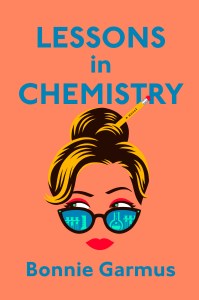
I enjoyed this book but not as much as I’d expected. It’s described on Goodreads as ‘Laugh-out-loud funny, shrewdly observant, and studded with a dazzling cast of supporting characters‘. But although I found parts of it amusing I didn’t laugh out loud. It’s about Elizabeth Zott, covering her life from the early 1950s through to the 1960s. She is a scientist, an independent single mother, who having lost her job, found herself as ‘the star of America’s most beloved cooking show Supper at Six. Elizabeth’s unusual approach to cooking (“combine one tablespoon acetic acid with a pinch of sodium chloride”) proves revolutionary. But as her following grows, not everyone is happy. Because as it turns out, Elizabeth Zott isn’t just teaching women to cook. She’s daring them to change the status quo.‘
I found Elizabeth quite an unlike able character and couldn’t warm to her. The book is full of exaggeration and hyperbole – examples are Elizabeth’s daughter Madeleine who at the age of four could read Nabakov and Six Thirty, the dog who was so clever and kind, worrying about Elizabeth and Madeleine. I don’t think we’re meant to take this as realistic – it’s a larger-than-life world with a semi-magic-realist strand and all just that bit over the top. In a complete contrast to the whimsy there’s a brutal rape, the death of Calvin, Elizabeth’s husband, abuse, abandonment, bullying and sexism thrown into the mix. Then there’s Elizabeth’s TV cookery show – I enjoyed the details of this more than the rest of the book. The ending is a bit of a let down and a bit rushed.
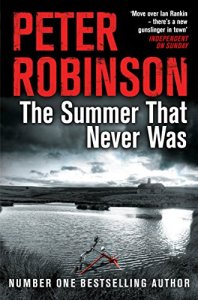
The Summer That Never Was by Peter Robinson 4*
This is crime fiction, the 13th Inspector Banks book. I’m gradually reading through the whole series. This is Goodread’s description:
A skeleton has been unearthed. Soon the body is identified, and the horrific discovery hits the headlines . . .
Fourteen-year-old Graham Marshall went missing during his paper round in 1965. The police found no trace of him. His disappearance left his family shattered, and his best friend, Alan Banks, full of guilt . . .
That friend has now become Chief Inspector Alan Banks, and he is determined to bring justice for Graham. But he soon realises that in this case, the boundary between victim and perpetrator, between law-guardian and law-breaker, is becoming more and more blurred . . .
What I particularly liked about this one is that it gives an insight into Banks’s childhood, as he investigates the murder of his childhood friend. The book alternates between this case and that of a present day case, that of the disappearance of another schoolboy, Luke Armitage, the son of an ex-football player. DI Annie Cabbot is in charge of that investigation. Although this can be read as a stand-alone novel, part of the enjoyment in reading the series in order is that you see the development of the main characters and their relationships over the years. There are now 27 books in the series with the 28th, Standing in the Shadows, due to be published in June 2023.
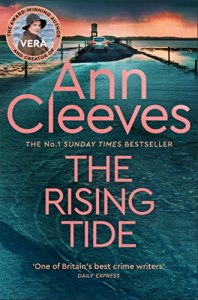
The Rising Tide by Ann Cleeves 5*
More crime fiction, this is the 10th Vera Stanhope mystery novel. I love the Vera books and this one is no exception. Ann Cleeves is a superb storyteller. Her books are deceptively easy to read, moving swiftly along as the tension rises. They are layered, cleverly plotted and above all convincing.
The Rising Tide is set on the Holy Island of Lindisfarne, a tidal island just off the coast of Northumberland, only accessible across a causeway when the tide is out. Ann Cleeves explains whilst the background to the novel is real any specific places on the island or the nearby coast are fictional. I’ve visited the island several times and know just how fast the tide comes in over the causeway. If you’ve watched the TV series it shows Vera crossing the causeway in her Land Rover in the opening titles.
It has a complex plot and plenty of twists and turns as DCI Vera Stanhope and her team investigate the death of Rick Kelsall who was discovered hanged from the rafters of his small bedroom on Holy Island. He is one of a group of friends who have met for a reunion each year on the island for the past fifty years. It appears to be suicide but Vera is convinced that it is murder and that the clue to his death lies in the past. I was kept guessing almost to the end as the secrets from the past are revealed.
These notes don’t do just justice to the books but I enjoyed all of them, even Lessons in Chemistry. My favourite though is The Rising Tide and I wish I’d written more detail about it just after I read it!

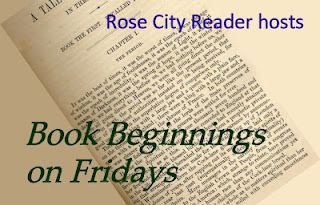
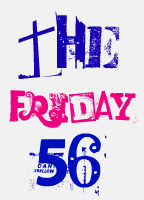 These are the rules:
These are the rules:
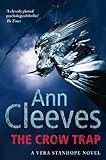 The Crow Trap
The Crow Trap The Glass Room
The Glass Room